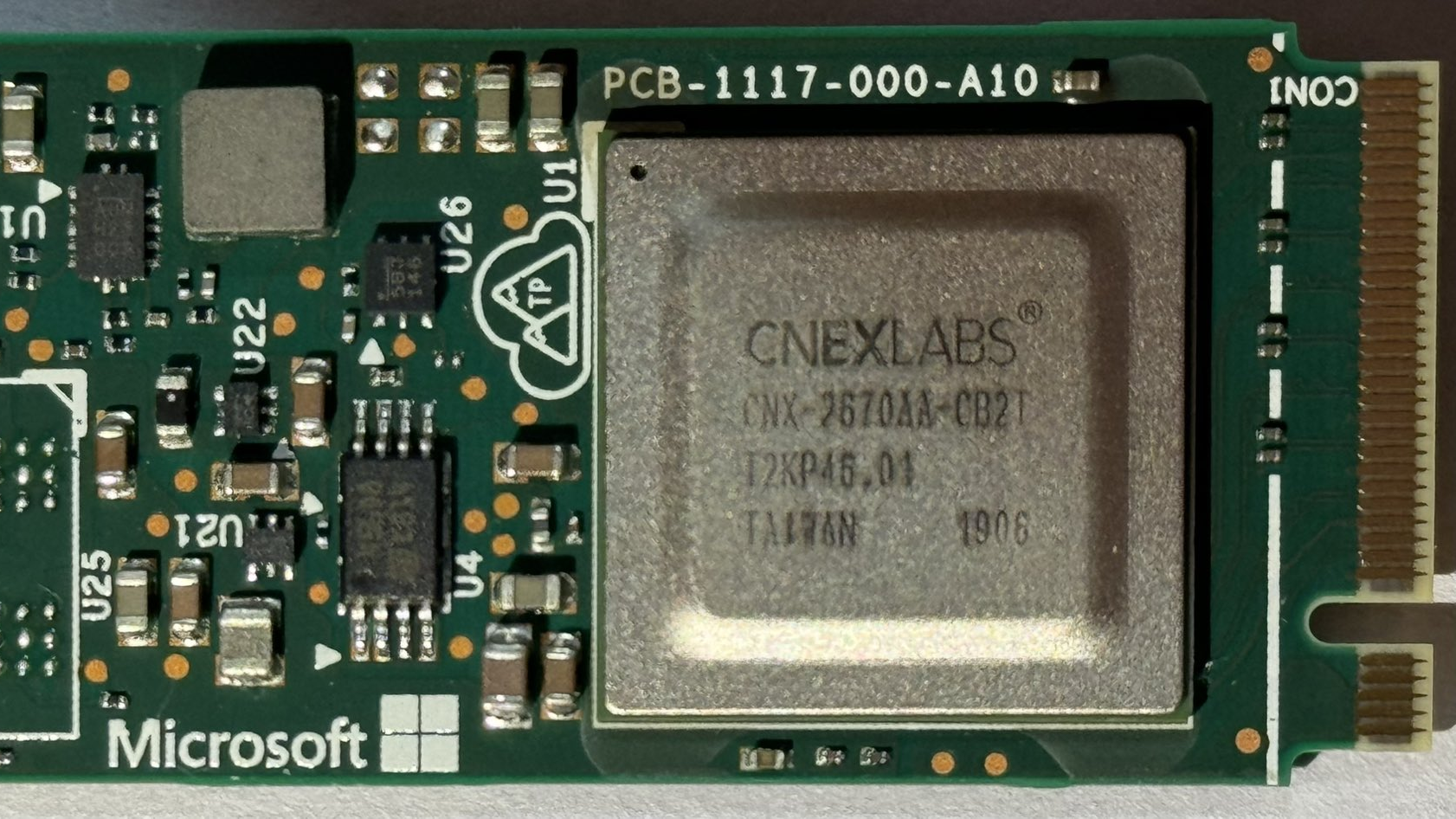Microsoft’s mysterious Z1000 SSD has surfaced per a leak from@yuuki_ans on X, who uploaded photos of the drive and detailed its specifications. The Microsoft SSD uses components from various companies: NAND flash chips from Toshiba, DDR4 RAM cache from Micron, and a controller fromCNEX Labs. We can’t be sure what this SSD is or will be used for, but it will likely be a drive for data centers and servers, not a retail product. However, the componentry, and lack thereof, indicates this sample is part of a broader portfolio of SSD models.
The Z1000 SSD has 960 GB of storage thanks to its four 256 GB Toshiba BiCS4 96-layer eTLC (TH58LJT1V24BA8H) chips. The leaker doesn’t specify the PCIe version the SSD uses, but if it’sPCIe 4.0, we could be looking at decently high performance. The drive has a 1 GB DDR4 RAM (MT40A1G8SA-075:E) cache made by Micron, which generally boosts performance. The CNX-2670AA-CB2T SSD controller is made by CNEX Labs, a private company founded in 2013.

We can also get additional details from the label on the Z1000. The label says this drive is an engineering sample with the date 19-06-2025, which may indicate the day it was manufactured. This would almost certainly mean the Z1000 is not a PCIe 5.0 SSD, as, in mid-2020,PCIe 5.0storage technology was still in its infancy.
SSD: Microsoft Z1000 960GB M.2 22110 NVMe 1.2 主控(Control): CNEXLabs CNX-2670AA-CB2T(19y6w) 缓存(Cache): Micron(D9VPP) DDR4 1GB MT40A1G8SA-075:E 颗粒(NAND): Toshiba 3D eTLC - 256GB TH58LJT1V24BA8H(bics4 96L) https://t.co/pJegEYzsph pic.twitter.com/ifgxTDiiJMMarch 9, 2024

What isn’t on the board is also interesting. In images three and four, which you may see by expanding the above tweet, we can see extra BGA mounting points for an additional DRAM chip. Additionally, several unused solder pads are on both sides of the PCB, presumably for additional capacitors. This implies that there may be larger versions of the Z1000 with 2 TB and perhaps even 4 TB of room, given that more capacity would require more DRAM and capacitors to ensure data protection.
The images are also slightly censored. The serial and product numbers are unsurprisingly covered, but some chips are on the board. One of these chips seems to be the DRAM cache, which the leaker censored in one image but forgot to in another. It’s unclear why the leaker wanted this chip censored, given how hard it is to discern what’s written on it. Two other chips were also censored, and these appear to be capacitors.
Neither the leaker nor the hardware specifications explicitly tell us what this SSD is nor what it is or is planned to be used for. However, we strongly suspect this is a data center drive for several reasons. The fact that the Z1000 has a CNEX Labs controller is especially telling;CNEX Labs has workedwith data center hyperscalers for years and was involved with the first3D XPointandOptane drives.
Plus, hyperscalers always make their SSDs, especially those with beefy specifications. OEM laptops and desktops also ship with SSDs you can’t buy at retail, but these drives are usually based on retail models and don’t usually have excellent specifications or performance. Plus, this SSD is a 22100 model, longer than the 2280 and 2230 models that are far more common in PCs. The reason why this SSD has never been seen before is probably because it’s simply not for sale.
Get Tom’s Hardware’s best news and in-depth reviews, straight to your inbox.
Matthew Connatser is a freelancing writer for Tom’s Hardware US. He writes articles about CPUs, GPUs, SSDs, and computers in general.